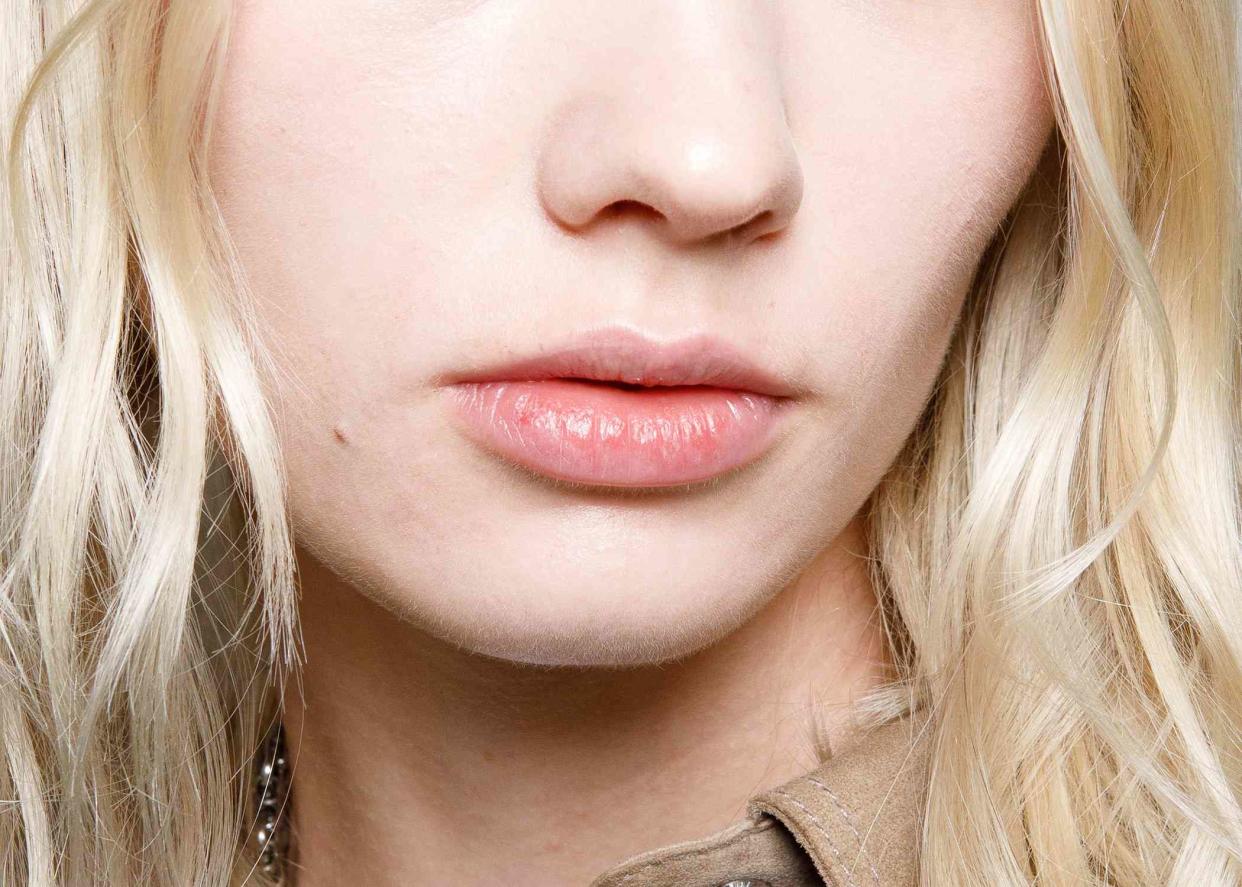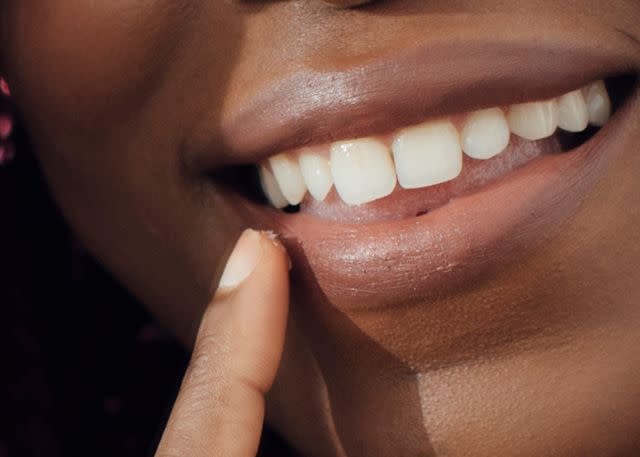Does Lip Balm Make Your Lips More Chapped? An Investigation

Getty Images
In terms of beauty woes, few things are as irritating as chapped lips. It’s because of this, that most of us have purse lip balm, couch lip balm, bedside table lip balm, gym bag lip balm, and the list goes on. After all, by placing a tube of hydrating goodness in all of our most frequented spots and accessories, we can ensure that our pout is never anything less than comfortable, right? Not necessarily.
Depending on your skin type, some lip balms can cause more harm than good. That’s why over the past few years, some folks have concluded that ChapStick actually chaps lips, as opposed to hydrating them. But is that true? We chatted with three dermatologists to find out.
Meet Our Expert
Ariel Ostad, MD, a board-certified cosmetic dermatologist in private practice on the Upper East Side.
Blair Murphy-Rose, MD, FAAD is a board-certified dermatologist and founder of sensitive skin-friendly brand Skincare Junkie.
Jocelyn Gandelman, MD, FAAD is a board-certified dermatologist at Schweiger Dermatology Group in NYC.
What Is ChapStick?
Just as Band-Aid is synonymous with all bandages, ChapStick is a specific brand whose name is often used interchangeably to identify lip balm. “ChapStick is a brand of lip balm that has been around since the early 1880s,” says Ariel Ostad, MD, a board-certified cosmetic dermatologist. “It’s designed to moisturize and protect the lips from dryness and chapping.”
There’s a difference between it and traditional lip balm, though. ChapStick has been marketed as the ultimate lip sealant to prevent transepidermal water loss, which keeps lips feeling hydrated all day long. It’s made with petrolatum, the number-one ingredient for the current skincare slugging craze. Because of this, Dr. Ostad says that “ChapStick can provide a more protective barrier, while lip balm can provide more hydration and moisture.” The reason? “Lip balm can be made with a variety of ingredients such as essential oils, shea butter, and other emollients,” Dr. Ostad explains, whereas ChapStick relies on its OG ingredient: petrolatum.
How ChapStick Works
Classic ChapStick ($2) doesn’t actually moisturize lips. It locks in moisturizing ingredients if you remember to apply them beforehand, just like with the full-face slugging trend.
“ChapStick works by creating a barrier on the lips to seal in moisture and prevent further moisture loss,” says board-certified dermatologist Blair Murphy-Rose, MD, FAAD, “[It uses] a combination of occlusives, skin-softening emollients, and skin-soothers to relieve dryness and prevent chapping.”
Does ChapStick Make Your Lips More Chapped?
Many people buy ChapStick thinking it will deeply hydrate their lips and heal and prevent chapping. While some of the brand’s newer formulas are crafted with more moisturizing ingredients (like the ChapStick Total Hydration Lip Balm, $4), OG ChapStick is designed to be an occlusive, not a hydrator in and of itself.
“The original classic ChapStick is petrolatum-based and contains camphor, fragrance, and dyes—for some, the original ChapStick is effective and non-problematic, although for many consumers, camphor, fragrance, and dyes can irritate lips,” says Dr. Murphy-Rose.
Ultimately, it depends on how sensitive your lips are. “If you are sensitive to the ingredients in ChapStick or other lip balms, the lip balm may temporarily improve your lips and moisturize them but then they [may] become irritated from the ingredients and more of the lip balm is needed, creating a cycle of irritation,” warns Jocelyn Gandelman, MD, FAAD, a board-certified dermatologist.
Here’s the kicker: “Many people are sensitive to ingredients without realizing it,” Dr. Gandelman says. So if you feel addicted to your ChapStick or lip balm—incessantly reapplying it to feel comfortable—you may want to analyze the ingredients and rethink the formula you’re using.

Getty Images
Best Way to Use ChapStick
If your goal is to achieve ultra-hydrated lips with moisture that lasts—and you want to use ChapStick—you’ll want to take a layering approach. Start with the moisturizing lip balm of your choice—we love the Nudestix Hydra-Peptide Lip Butter ($20), Summer Fridays Lip Butter Balm for Hydration & Shine ($24), and Marin Lip Treatment (it sold out almost immediately after launch and currently has a 100,000-person waitlist)—then top it off with a coat of ChapStick.
“Lip balm can be applied to lips as often as needed, even a few times an hour for very dry and irritated lips,” Dr. Murphy-Rose says. “If you notice an increase in irritation, chapping, or what appears to be dryness while using a ChapStick brand lip balm (or any for that matter), discontinue use.”
If you can’t tolerate ChapStick but want to reap the rewards of a slugging lipcare routine, Dr. Murphy-Rose recommends pure petrolatum like Vaseline, as it’s “least likely to elicit hypersensitivity reactions or irritation,” she says. (FYI: Vaseline is sold in Original Lip Therapy ($3) and Rosy Lips Lip Therapy ($3), both of which feature dyes; Vaseline Original Healing Jelly ($2), however, does not—it’s 100 percent pure.)
The Takeaway
Classic ChapStick can seal in moisture but not deliver it on its own. So, if your lips are super dry and chapped, you’ll want to use a hydrating lip balm and seal it in with an occlusive ChapStick or pure petrolatum layer.
In general, when choosing lip-care products for ultra-dry, sensitive, chap-prone lips, Dr. Murphy-Rose recommends steering clear of balms containing camphor, menthol, synthetic fragrance, and dyes.
For more InStyle news, make sure to sign up for our newsletter!
Read the original article on InStyle.

